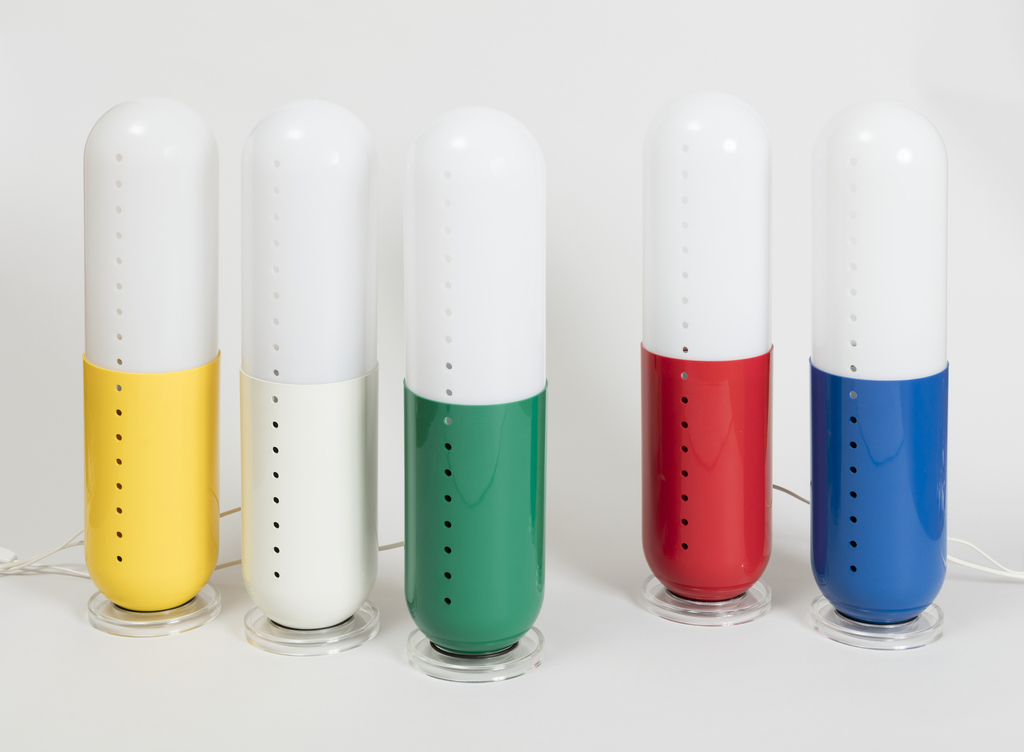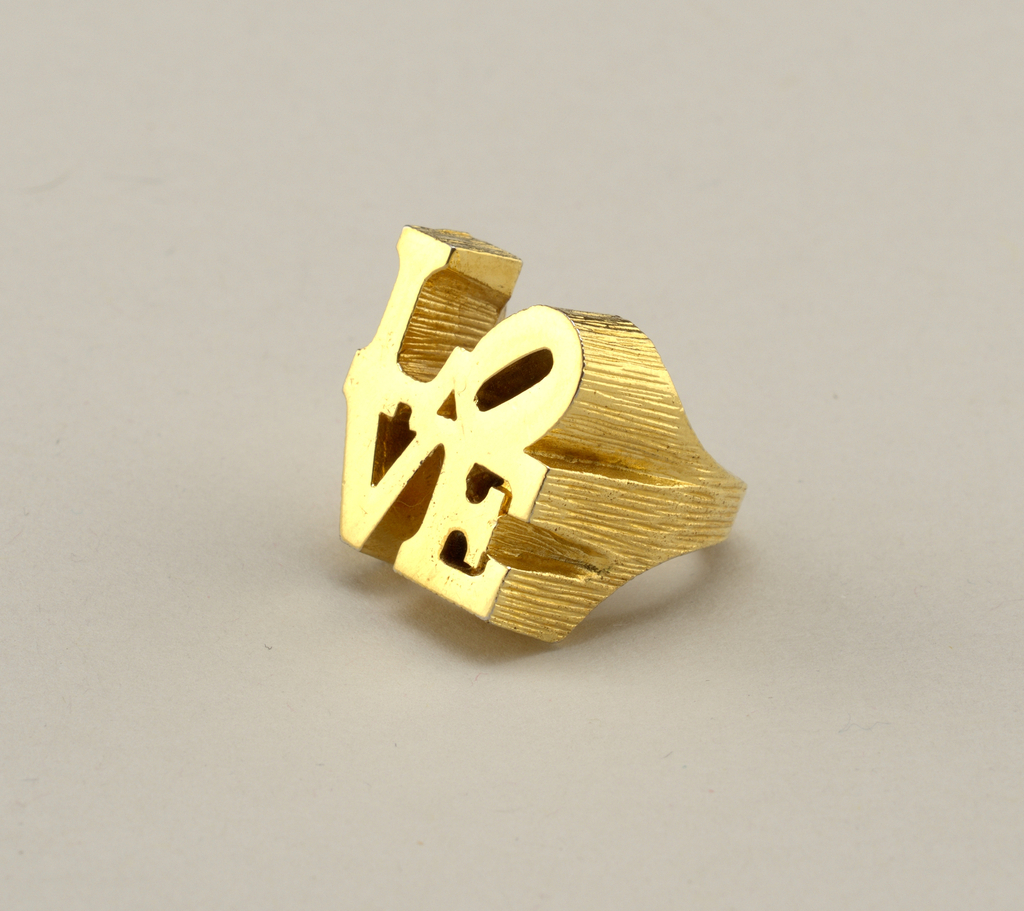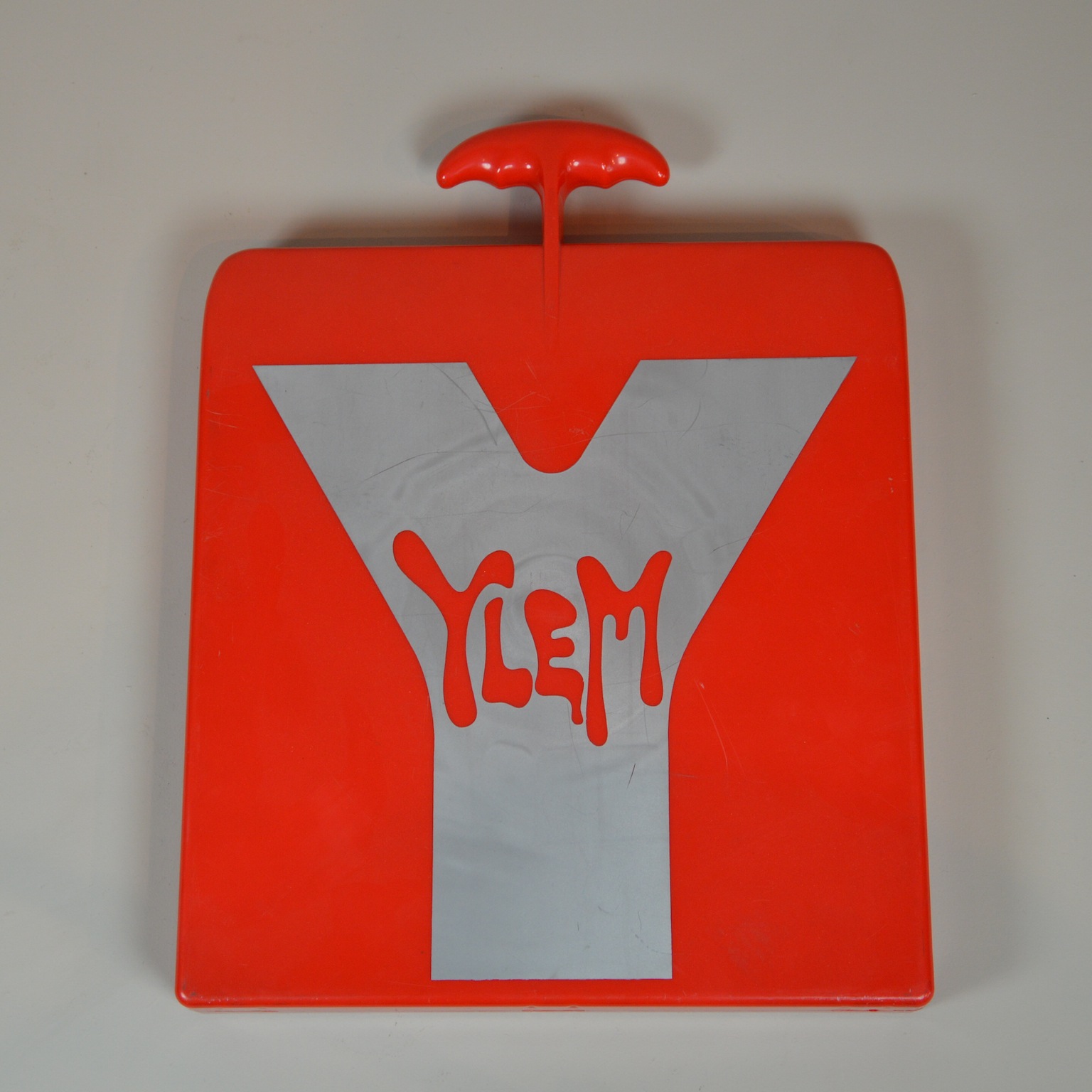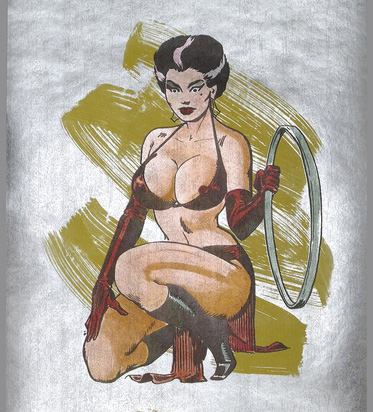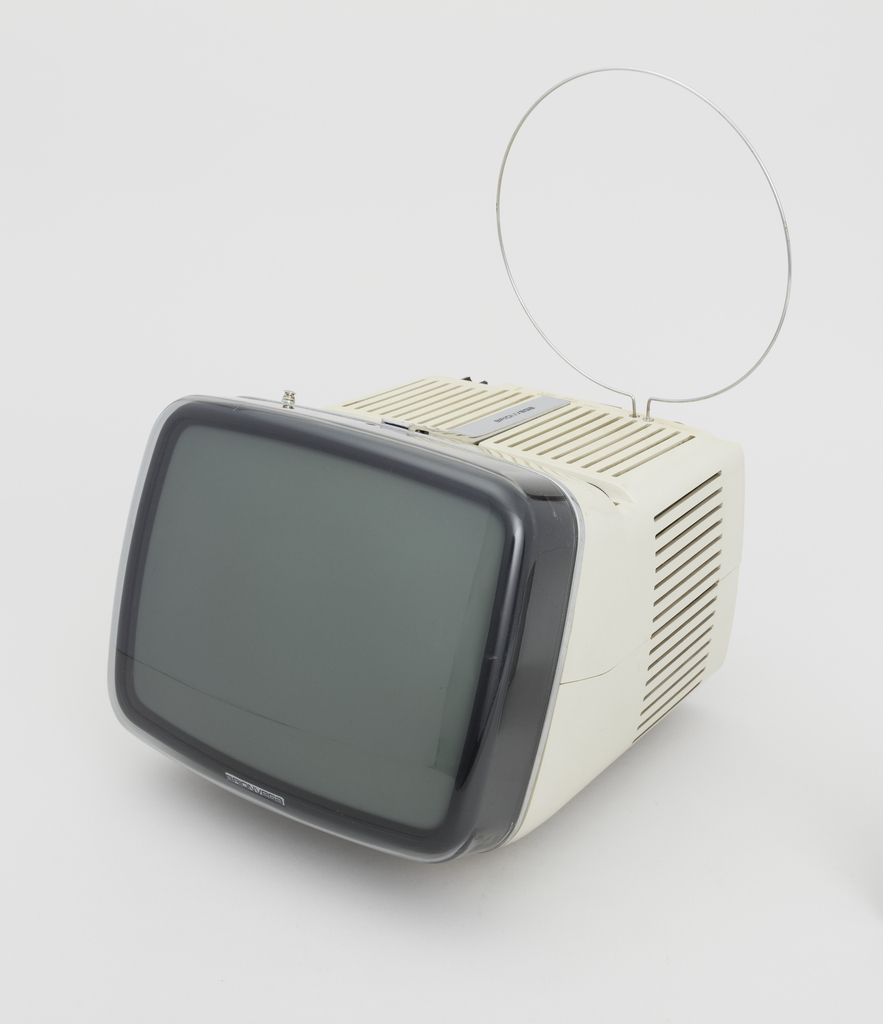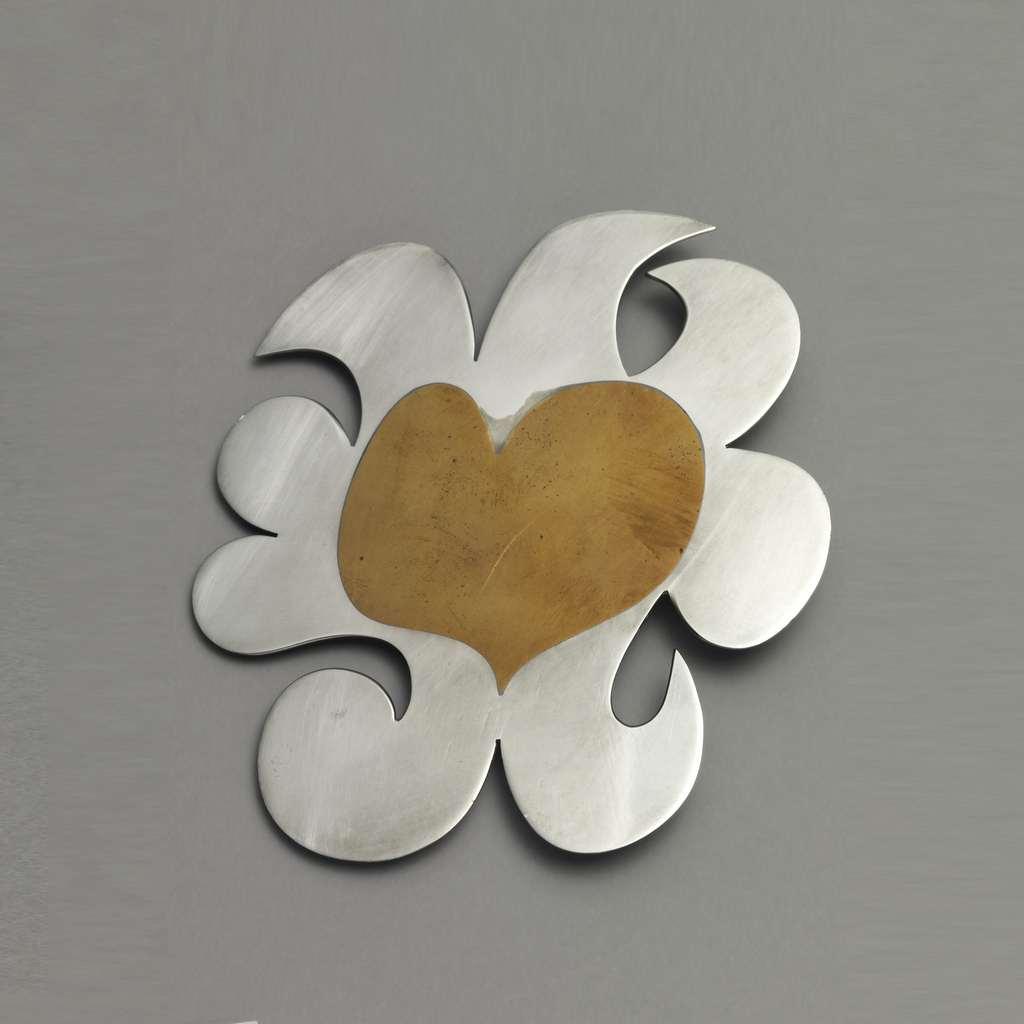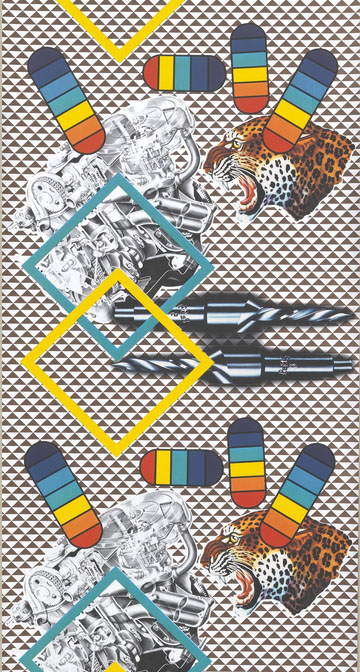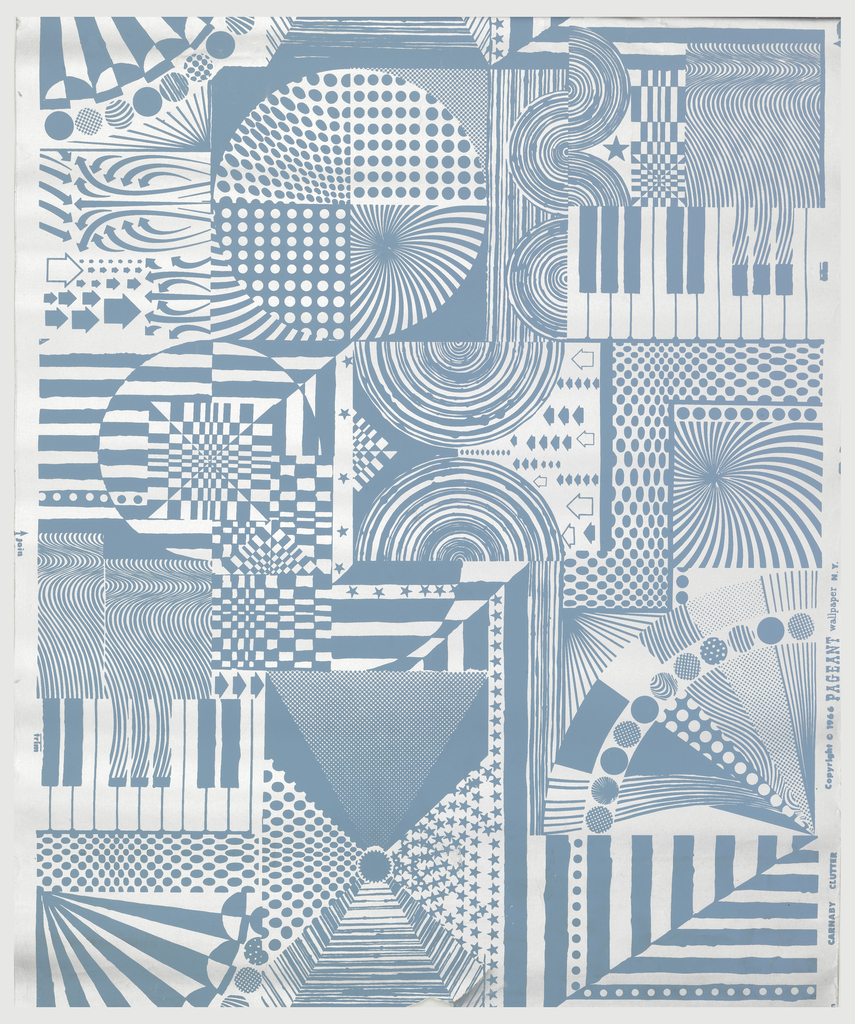Revealing the importance between Pop Art and design, Cesare Casati and Emanuele Ponzio’s Pillola lamps designed in 1968, are representative of Italy’s anti-design movement of the mid-1960s and 1970s. Challenging notions of “good design,” the anti-design movement took its cues from Pop Art’s use of bright colors and banal subject matter. The Pillola lights culturally...
In celebration of World Pride, June Object of the Day posts highlight LGBTQ+ designers and design in the collection. This gilded metal ring bears the motif of one of pop art’s most recognizable artworks. Modeled after Robert Indiana’s LOVE graphics and sculptures, the ring represents an element of popular design that reveals the relationship between...
Author: Evelyn Meynard Published in 1971, Ylem is a manifesto that contains a collection of designs and texts by the German industrial designer Luigi Colani, held in the Cooper Hewitt National Design Library .
With Halloween still fresh in everyone’s minds, this paper conjures up a scene reminiscent of “The Bride of Frankenstein.” A metallic silver background greets the eye as the color pallet continues to sparkle and stun the viewer with its combination of blacks, reds, and yellows. Over a single repeat is a depiction of a Femme...
During the 1950s and 1960s, television was a cultural force both in America and abroad. Milestones that included the Civil Rights movement, the Vietnam War, and the coronation of Queen Elizabeth II were broadcast across the world. Variety and music shows, which included “Ready Steady Go!” and “The Ed Sullivan Show,” drew youth to watch their...
The Cooper-Hewitt has several wallpapers designed by Christine Tarkowski and produced by the Thematic Wallpaper Company which she founded in 1992. Like many of Tarkowski’s designs, this wallpaper features an everyday object, in this case a drain, to serve as its unconventional motif. Other wallpapers feature hands, meatballs, cacti, and rose thorns seemingly taken from...
This brooch, designed by artist Carol Summers, is a three-dimensional representation of the big, bold wood-cut prints for which he was famous. Summers, who passed away on October 27th, 2016, trained at Bard College and the Art Students League in New York City, where he studied painting and printmaking. This brooch is unique in that...
This wallpaper by Peter Phillips was one of several designed by contemporary artists for the Marburg wallpaper company in the 1970s. Founded in 1845 in Marburg, Germany, the company is one of the oldest wallpaper producers in the country. Beginning in the 1920s, it became known for collaborating with contemporary artists to create papers, though...
In 1957, the Scottish fashion designer John Stephen opened a boutique for young men in London on Beak Street. One year later he moved the store, called His Clothes, to 5 Carnaby Street, an inauspicious street in Soho largely filled with rundown warehouses. The retailer soon became noted for his tight-fitting, flamboyantly-colored clothing and drew...
